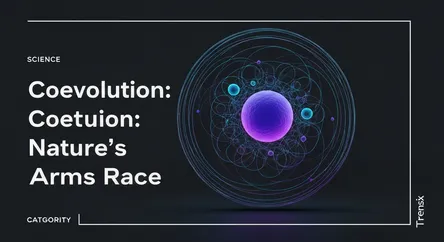Science
Coevolution: Nature's Arms Race

Discover coevolution, the process where two species reciprocally affect each other's evolution, shaping the natural world in a constant dance.
What is it?
Coevolution is a fundamental concept in biology where two or more species reciprocally affect each other's evolution. It's like a biological arms race or a dance of adaptation. When one species evolves a new trait, it puts pressure on the other species to adapt in response, and this cycle continues over generations. A classic example is the relationship between a flowering plant and its pollinator, like a bee. The flower's shape might evolve to better fit the bee's body, while the bee's feeding apparatus evolves to more efficiently extract nectar. This can also be seen in predator-prey relationships, where a predator gets faster, forcing the prey to evolve better defenses or speed.
Why is it trending?
Coevolution is gaining attention as scientists uncover its deep impact on biodiversity and ecosystem stability. Research into coevolutionary networks helps us understand how the loss of one species can trigger a cascade of extinctions. Furthermore, studying host-pathogen coevolution is crucial for understanding infectious diseases, including how viruses like influenza or SARS-CoV-2 evolve to evade our immune systems. This field provides critical insights into conservation biology and epidemiology, making it a hot topic in scientific discussions.
How does it affect people?
Coevolution directly impacts human life in several key areas. In agriculture, it drives the arms race between crops and pests; as we breed pest-resistant plants, pests coevolve to overcome these defenses. In medicine, the coevolution of bacteria and our use of antibiotics has led to the global crisis of antibiotic resistance. Understanding these dynamics is essential for developing sustainable farming practices and new medical treatments. Coevolution also shaped our own species through our relationships with domesticated animals and the microbes that live in our gut, influencing our diet and health.